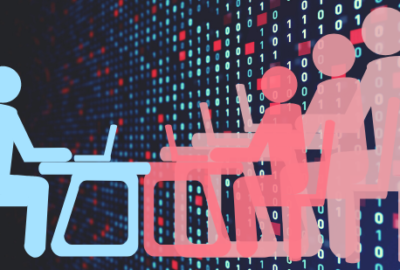

With many federal employees still on mandatory telework, USPTO’s IT leadership hasn’t slowed down the momentum of spinning up new services or replacing the ...
When Patent and Trademark Office executives met with industry partners in February to discuss opportunities and challenges and take the next step in its IT modernization journey, the coronavirus pandemic was on the horizon, but not yet driving the conversation.
Six months later, and with many federal employees still on mandatory telework, USPTO’s IT leadership hasn’t slowed down the momentum of spinning up new services or replacing the agency’s legacy capabilities.
USPTO Chief Information Jamie Holcombe chalks up some of that success to “serendipity.” The agency, for example, has a workforce that took advantage of the agency’s flexible telework policy long before the pandemic.
Secondly, USPTO began its move to the cloud in January, giving the agency the bandwidth needed to support more employees working remotely – well before the agency needed to rely on that extra bandwidth.
“One of the big things I’ve been saying to other agency CIOs [is] you have to set these things up before the actual crisis hits. Right now, we should be planning to double our capacity and have those contract vehicles in place,” Holcombe said Wednesday during a virtual ACT-IAC presentation.
But even with the increased capability made possible by the cloud, USPTO’s IT workforce still had to step up to face some challenges. During the pandemic, the agency has gone from 8,000-to-9,000 teleworking employees to about 13,000.
In addition, its workforce runs about 1,200 WebEx sessions every day, with each videoconference hosting anywhere from 14-to-40 employees.
As a result, the agency ran into licensing and bandwidth issues early in the pandemic. But Holcombe said the IT workforce has been the “unsung heroes of the COVID-19 pandemic” and have met all of the agency’s work-from-home challenges.
“We did have slight problems in the beginning, but what we did to combat that was making sure that we scaled up both software licenses and hardware licenses to ensure that we could manage and respond to the demand,” Holcombe said.
The agency has also seen other pre-pandemic IT modernization investments pay dividends. Over the past 15 months, Holcombe said USPTO has worked through its “technical debt,” taking away all the hardware systems no longer supported and either replacing them or updating them to supported versions.
While other agencies have dealt with backlogs caused by a disruption in business as usual, Holcombe said USPTO has seen an “uptick in productivity” because employees have taken fewer vacation days.
Those extra labor hours will go to good use, because USPTO expects an increase in workload in the coming years when it comes to trademarks and patents.
New patent applications reached an all-time high of more than 665,000 in fiscal 2019. Trademark application filings increased more than 5% that same year.
The agency has had success training algorithms in patent classification, which aims to help USPTO’s 8,000 patent examiners route and evaluate incoming applications. Holcombe said the next step is to use artificial intelligence and machine learning to create a neural network for its trademarks fraud detection.
Meanwhile, USPTO’s IT office has also spun up other tools more quickly, such as its “Patents 4 Partnerships” platform, a searchable repository of patents and published applications available for licensing that took the agency 10 days to launch.
“This helps the economy and it helps other entrepreneurs look at things that are a possibility for solving some of these problems that we have,” Holcombe said, adding that building out a “robust IP marketplace” makes it easier for patent-holders to make money off their ideas.
USPTO also launched its Image File Wrapper archive within 90 days, which improves automated access to the agency’s most high-value data, such as images and metadata from its Patent Application Information Retrieval (PAIR) system.
Kristin Fuller, the division chief of the OCIO Systems Division for procurement, said the speed of these projects has been made possible because of a “deep dive” the agency has taken in looking at the contracting for each of its products.
“Instead of buying development separately and [operations and maintenance] separately, we’re buying a contractor that has development and O&M combined. It is a huge cultural shift for us,” Fuller said.
Copyright © 2024 Federal News Network. All rights reserved. This website is not intended for users located within the European Economic Area.
Jory Heckman is a reporter at Federal News Network covering U.S. Postal Service, IRS, big data and technology issues.
Follow @jheckmanWFED

